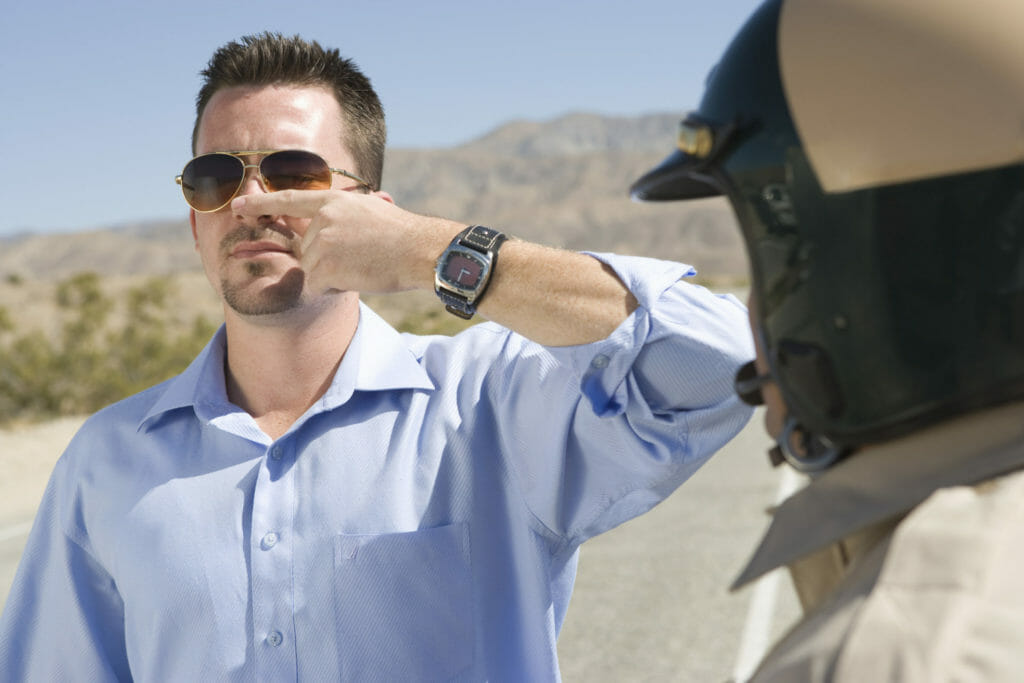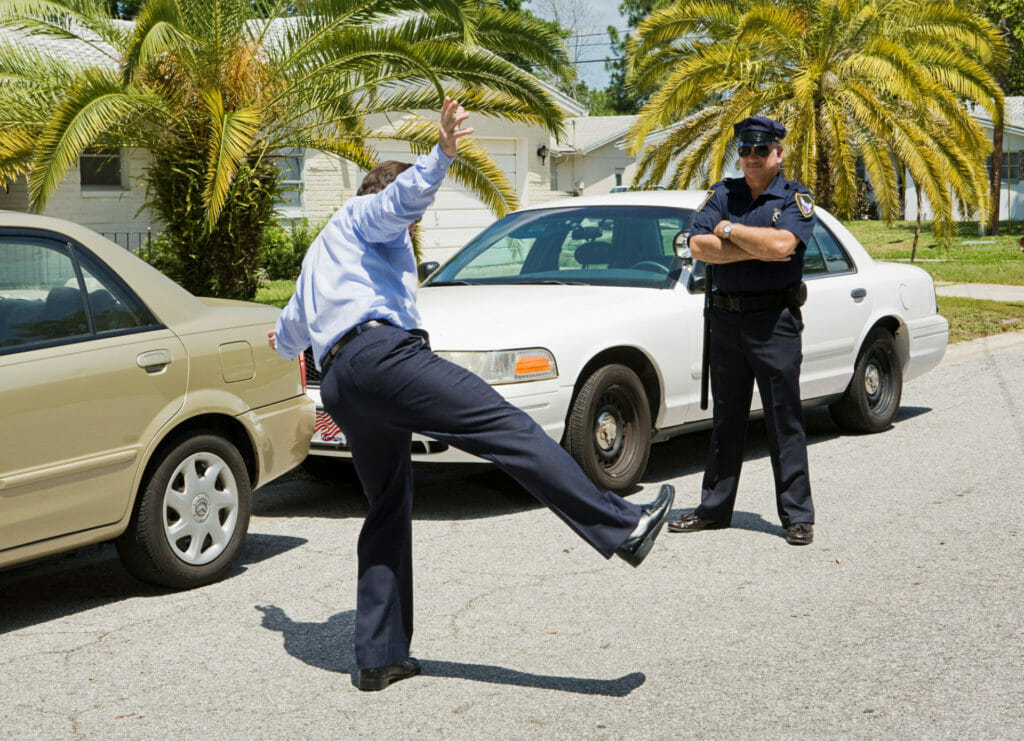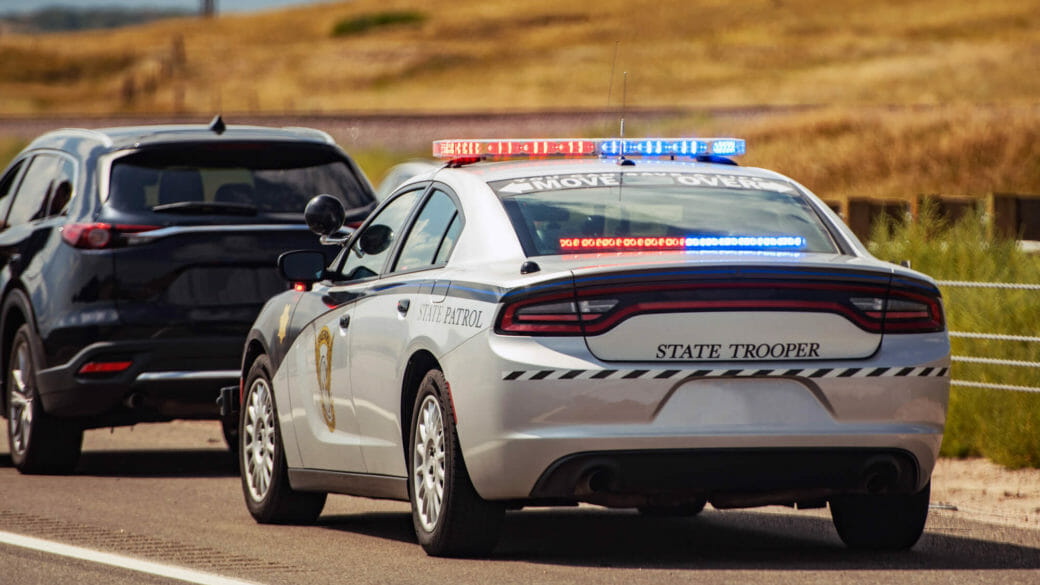Field Sobriety Testing - The Three Standard Tests
Field sobriety testing begins when the blue and red lights go on behind you. You pulled over, and the police officer may have mentioned that you were speeding, made a wide turn, or perhaps were not staying in your lane. They asked for your driver’s license and other documents, while also inquiring if you had anything to drink, where you were going, and where you were coming from.
What you may not realize is that the police are asking things in such a way to initially gauge whether you may or may not be impaired (driving under the influence DUI) while operating a motor vehicle.
Officers are intentionally trying to see how you respond when your attention is divided between answering their questions, collecting specific items, and doing so promptly and without dropping them.
But this is usually only the beginning of these types of attention-related tasks. When police are conducting an investigation to determine whether a driver is impaired or not, they will almost certainly request that the driver perform Standardized Field Sobriety Tests (FSTs). These tests were developed and “validated” more than thirty-five years ago by the National Highway Traffic Safety Administration (NHTSA).
What is a Field Sobriety Test?
A field sobriety test is not just one test but is actually a battery of three tests. These three tests are scientifically validated to indicate intoxication 90 percent of the time. Keep reading to learn the components of field sobriety testing.
The 3 Standard Field Sobriety Tests
There are three tests that have been used for several decades and determined that a certain number of performance cues were correlated with alcohol impairment.
Keep this in mind: you do not have to agree to take a field sobriety test; there is no consequence if you refused to submit to the tests.
- Horizontal Gaze Nystagmus (HGN) the eye test
- Walk and Turn
- One Leg Stand
- Horizontal Gaze Nystagmus (HGN) the eye test
Both the Walk and Turn test and One Leg Stand tests are “divided attention tests.” They are designed to examine whether an individual can sufficiently focus on two different things at once.
- Can you listen to the instructions that the officer has given to you and remember how to properly execute it?
- Can you perform a physical exercise (walking, maintaining a particular pose, and balancing) and simultaneously perform a mental exercise (counting up to a particular number)?
- Can you listen to the instructions that the officer has given to you and remember how to properly execute it?
What the Tester is Looking For
When impaired by alcohol, studies have shown that the greater one’s impairment, the more and more difficult it will be for a person to divide his or her attention.
However, there can be other explanations for poor performance on a field sobriety test that has nothing to do with alcohol impairment.
An individual’s physical aspects play into this along with more common factors such as physical exhaustion, stress and anxiety, and Attention Deficit Disorder.
Let’s look at each of these tests.
Horizontal Gaze Nystagmus Test (HGN):

A police officer performing a field sobriety test on a driver
Nystagmus refers to an involuntary jerking of the eyeball in response to a stimulus. When a person’s central nervous system is affected by alcohol, other substance, or neurological condition, this involuntary jerking can be more distinct and easily visible.
In this DUI Eye Test, the subject is requested to follow a pen or a penlight (held about 12-15 inches away from the face and just slightly above eye level) with his eyes only, not moving his head. The officer will then look for “cues” of nystagmus, three cues in each of the subject’s eyes for a total of six cues.
This video shows several examples of the Visual Nystagmus Test and describes what the police are looking for.
According to NHTSA publications and research, two types of cues, in particular, give evidence that alcohol is involved.
Jerking of the Eye
If the officer observes Distinct and Sustained Nystagmus at Maximum Deviation, meaning that the jerking of the eye is observed when held all the way to either the right or left for more than four seconds, this is indicative that the nystagmus is caused by alcohol and not by some other source.
Bouncing of the Eye
Secondly, if the officer observes the Onset of Nystagmus Prior to 45 Degrees, meaning that they observe the bouncing of the eye at the midway point between the person’s nose and the side of her head, NHTSA believes this is evidence that a person’s BAC is above a .08.
Although this examination is often considered the strongest evidence by officers and NHTSA, it is not foolproof! It is important to note that a number of these cues may be naturally occurring in some individuals and may occur in others because of a head injury, stroke, inner ear disorder, or even vitamin deficiencies.
In other instances, the way that the officer holds and moves the stimulus could actually induce nystagmus. Further, most of the testing done for research purposes uses a featureless background (a blank wall, for example).
But, the vast majority of HGN tests are administered along a busy roadside outdoors because that is where traffic stops occur. Passing cars, flashing lights, bright sun, even birds flying through the air are commonly in a suspect’s field of vision while the officer is checking the eyes.
These kinds of backgrounds featuring movement and distractions are called “optokinetic backgrounds,” and these can impact how the eye tracks the stimulus and may even result in “false positive” clues.
Walk and Turn Test
In this portion of a field sobriety test, the subject must stand in a line with his feet in the heel-to-toe position with his arms at his sides. He must not start moving or taking steps until the officer instructs him to do so, nor should he alter how he stands while the officer gives him instructions.
He must then take heel-to-toe steps down a line in a prescribed manner, turn around in a very specific fashion, then take more steps back down the line until he has returned to his original position, all the while counting his steps aloud.
In total, there are eight different behaviors that officers are looking for to decide whether a person’s performance is being impacted by alcohol. The NHTSA researchers determined that if a person demonstrated two or more problematic behaviors on this test, along with four or more cues on HGN, there was a strong correlation with having a BAC of .08 or greater 80% of the time.
One Leg Stand Test

A motorist trying to walk a straight line during field sobriety testing while a police officer looks on.
In this test, the subject must stand with his heels together and arms at his sides. The subject must then stand on one foot and lift the other foot outwards approximately six inches off of the ground, keeping the raised leg straight, all the while counting aloud in the prescribed manner until the officer tells him to stop.
He must not raise his arms or use them for balance, nor should he let his foot drop to the ground or hop.
In this test, there are four different behaviors that officers are looking for to decide whether a person’s performance is being affected by alcohol. The NHTSA researchers determined that if a person demonstrated two or more problematic behaviors on this test, along with four or more cues on HGN, there was a strong correlation with having a BAC of .08 or greater 65% of the time.
Six Issues With Field Sobriety Tests
Although the components of field sobriety testing have been researched by NHTSA, there are only certain persons who should be given the tests. And these tests should be administered only under certain circumstances, otherwise, they lack scientific validity. In such circumstances, the guidelines have recommended that the tests should not be administered.
One of the questions that often arise due to these two physical tests is whether the person asked to perform this test was a valid subject.
Following are six things that could disqualify a person as a valid subject for a field sobriety test.
1. Injuries
NHTSA testing and research have found that people with injuries to their feet, legs, and back had difficulty performing the test even when completely sober. Persons over the age of 60 also had trouble with the test because of balance concerns due to aging and weakening muscle tone.
2. Clothing, Footwear
The researchers also determined that these tests are difficult to perform if someone is wearing heels that are two inches or higher; they recommend that the person remove such shoes for these tests.
3. Surroundings
The lighting of the area where the test occurred is another concern; it’s much more difficult for someone to walk perfectly on a straight line when it’s extremely dark. Additionally, if the area is not level or there is debris on the ground, the field sobriety test will also be compromised.
From a practical standpoint, even if none of the above applies to you, these tests will be much more challenging for some people while sober versus being affected by alcohol. Are you an athlete or a trained dancer? On the other hand, would you describe yourself as uncoordinated or klutzy? Persons with excellent muscle memory, and coordination, and those who are accustomed to regularly learning new physical movements will naturally be more adept at these tests.
4. Aging, Fitness
Similarly, as a general rule, the more one ages, the weaker their muscle tone and coordination become. Did you know that strength declines by 10-15% per decade of life up until the age of seventy, where it then accelerates to 25-40% loss per decade? Even though a fifty-five-year-old person would still be considered an “appropriate” candidate for a field sobriety test according to NHTSA, he will still have a much more difficult time performing these tests than would a twenty-five-year-old.
5. ADHD, Other Medical Issues
Finally, have you been diagnosed with Attention Deficit Disorder or ADHD? These individuals face much greater challenges in listening to a variety of instructions and executing them, so these FSTs will, again, be much more difficult than for the average individual.
6. Officer Conduct of the Tests
Another problem that often arises deals with the law enforcement officer who is administering and evaluating the field sobriety test. Has she been appropriately trained in how to give the instructions?
Is she looking at the person’s behaviors in the way that NHTSA requires?
Did she properly demonstrate the tests?
Even though all officers receive instruction in these tests during their law enforcement training, that does not ensure that they can adequately explain and evaluate in a real-life situation.
There are advanced training and seminars that officers can attend in order to better understand field sobriety testing and DUI enforcement.
If the testing does not comply with the above-referenced requirements, your DUI defense attorney will be able to dispute whether the officer should have given you the tests at all and also whether your performance can be used as evidence during a trial.





